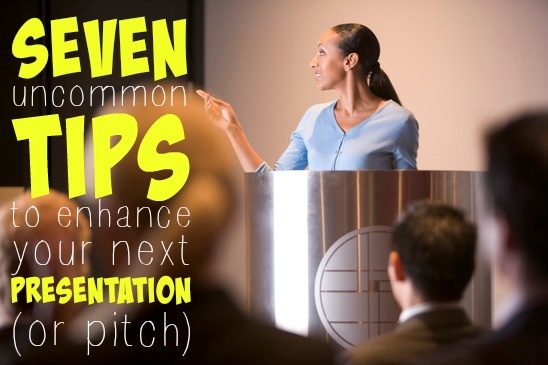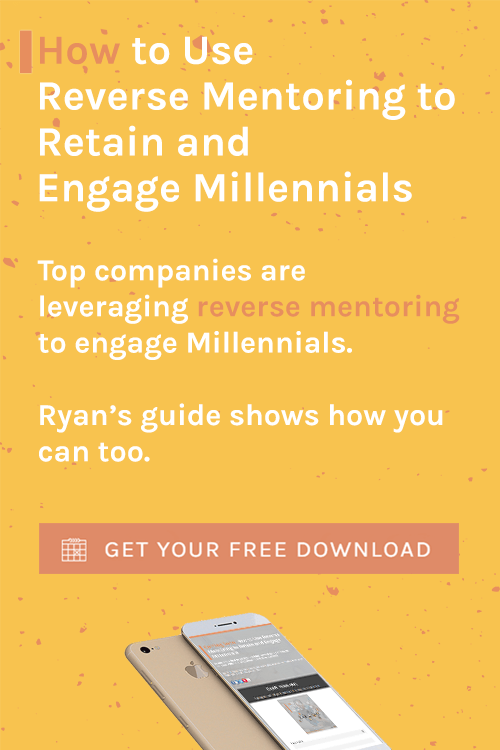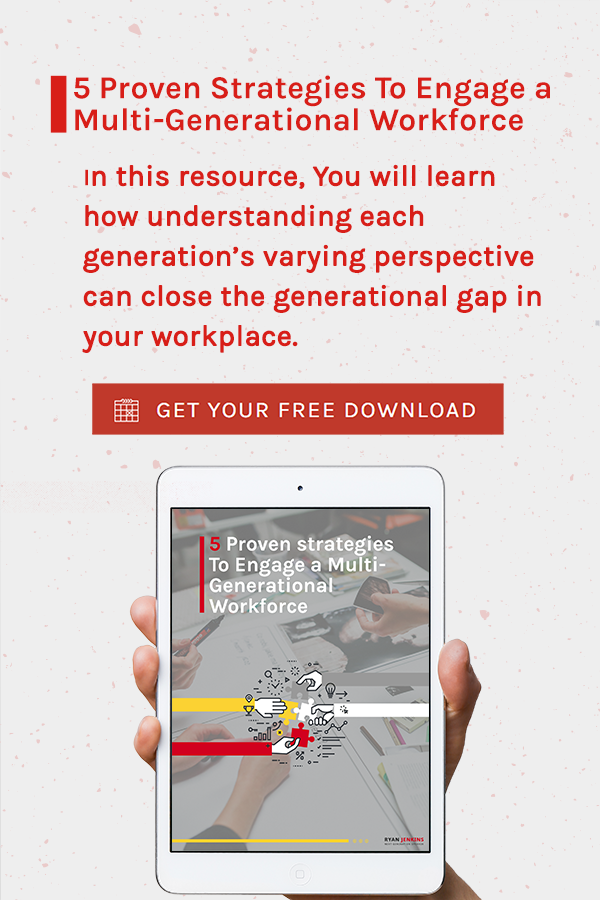Being a paid professional keynote speaker, I typically get two reactions when people ask what I do. The first is shock because people’s #1 fear is public speaking and they are shocked that someone would willingly speak in public as a career. The second reaction is curiosity followed by the person asking for some quick speaking tips to help them prepare for their upcoming presentation, pitch, or wedding speech. This post is for the curious.
You probably know many of the public speaking basics like know your subject, use strong eye contact, and smile. So I dug deep into my public speaking bag of tricks to reveal a few uncommon tips you can use right away to enhance the effectiveness of your next presentation or pitch.
1) Harness the Power of Repetition.
What gets repeated gets remembered. "Tell them what you are going to tell them, tell them, then tell them what you told them.” This is an infamous line in the speaking world but it stresses the power of repetition. Identify the central theme or message of your presentation and repeat it often throughout your presentation. The pithier the better. What gets repeated gets remembered. (Ahh…see what I did there!)
2) Provide a Roadmap.
As humans, we think linear. To get to point C we need point A and then point B. With any audience, there is a certain level on angst when settling into a presentation. Questions that roll around in audience's heads are: What am I going to learn? Will it be applicable to me? How are we going to get there? Providing a roadmap or an agenda slide that addresses those questions will help put your audience at ease. Knowing where they are going will also allow them to be fully present and discourage them from mentally jumping ahead.
3) Address the Elephant.
Anything that will distract your audience—a loud noise coming from another room, a presenter's wardrobe malfunction, or any technology mishaps—need to be addressed as soon as possible. Addressing the elephant in the room will free you to move past it and it will also give your audience permission to move past it so they can get back to focusing on your content.
Related Read: 3 Aspects Needed For An Epic Next Generation Presentation
4) Never End with Q&A.
I’m not sure who started this lethal trend of ending presentations with Q&A but it must end. Q&A is helpful in so many ways. It provides valuable insights into what your audience is thinking and it allows the audience to gain greater clarity. Use Q&A but don’t end with it. End with Q&A and you run the risk of your presentation being hijacked by an audience member with an off topic or negative question which will be the last impression your audience has of your presentation. Instead, leave 2-3 minutes after the Q&A and end with a story. Use a story that reinforces the purpose of your presentation and inspires your audience to act. End on your terms.
5) Provide a Resource Page.
After an effective presentation or pitch, audience members will want copies of your slides, to connect on social networks, and/or take their learning of the subject further. Provide your audience with a customized online resource page (ex: www.xyz.com/conference-name) where you provide links to the research, helpful books and blog posts, your social networks, giveaways, and/or copies of the presentation. I use the URL, RyanIsLive.com to direct people to various resource pages or to provide audiences with copies of my presentation slides.
6) Choose to Self Deprecate.
Your audience will automatically view you as an authority because you are on stage or have the microphone. Authority doesn’t translate to trust but rather can foster resentment or skepticism, so quickly counter these emotions by self deprecating. Be careful not to undermine your expertise but give them the sense that you are just like them. Self deprecating can help put you on the same level as the audience. Giving the sense that you and your content are perfect will only result in distrust. People like and trust people who can laugh at themselves.
7) Master the Tie-in.
There is a blissful moment in a presentation when the audience gets a glimpse that the presenter is fully present and that the presentation is just for them. A tie-in is when a presenter references a moment or comment that the entire audience has experienced together and inserts it into the presentation on-the-fly. The tie-in can take the form of a comment from an audience member or previous speaker, or a memorable moment that was experienced at the event or in the community. The tie-in puts the presenter on the same level as the audience because it reveals they have experienced the same thing together. This tip takes practice and close observation but is sure to win over your audience.
BONUS) Anticipate disruptions.
Plan for the worst. Have a back-up to your back-up plan when the technology fails. Prepare in advance your response when someone’s phone rings during your presentation. Practice dealing with hecklers or tough questions. Put yourself in the shoes of your skeptics and think through where they will likely poke holes in your presentation. If you know your content cold, you won’t be fearful of getting interrupted and losing your train of thought which enables you to be more present and roll with the inevitable distractions with greater ease. A disruption can be a presenter’s greatest opportunity to connect with the audience. Prepare in advance to capitalize.
Related Read: Fail Proof Your Next Presentation With These 5 Alternate Presentation Solutions [Mac Only]
Question: What hacks do you use when public speaking?
Consider Ryan to be your next keynote speaker by clicking here...
![]()






